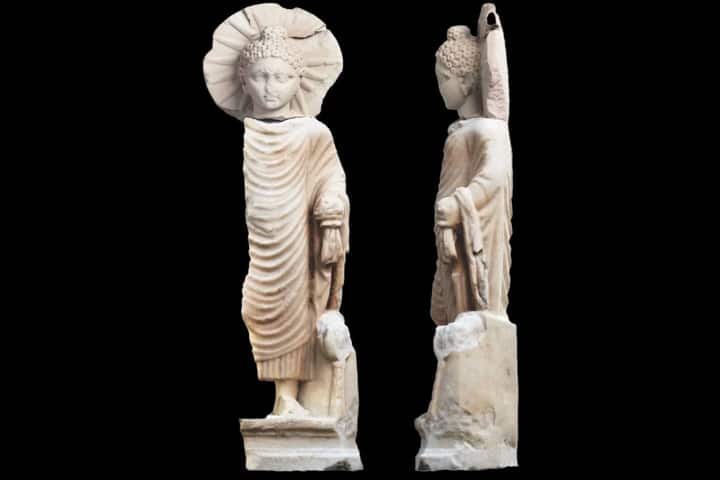While the world coming together as one entity may seem a modern concept, it was prevalent in ancient times too. Evidence of this is found on a regular basis and the latest one is the discovery of a two-foot-tall Buddha statue in the ancient Egyptian port city of Berenike.
What makes this find vital as per smithsonianmag.com report is that this is the first Buddha that has been discovered west of Afghanistan. The artefact made of Mediterranean marble, points to exchange of goods between India and ancient Rome.
The experts, after carefully examining the details of the statue’s style, dated it to 2nd Century CE. As per Egyptian Ministry of Tourism and Antiquities’ statement, the halo around its head is covered with sun rays indicating Buddha’s radiant mind.
The ancient port Berenike was established in the 3rd Century BCE and growing in importance it became Roman-controlled Egypt’s largest port. Semi-precious metals, ivory and textiles passed through the city for years till it was finally abandoned in 6th Century CE.
Digging by archaeologists in Berenike brought to light other objects that highlight the trade and cultural exchange between India and the Roman Empire. One among the findings is an inscription in Sanskrit which dates back to the time of Marcus Julius Philippus aka Phillip the Arab who ruled the Roman Empire from 244 to 249 CE.
What discoveries like this show is the relationship that existed between ancient India and the Roman Empire while stressing on how Egypt played a crucial role as it was “centrally located on the trade route that connected the Roman Empire to many parts of the ancient world.”
The excavations at Berenike have been conducted by American and Polish researchers with Steven Sidebotham, a University of Delaware historian leading the former group while the latter was headed by Mariusz Gwiazda, an archaeologist at the University of Warsaw.
Way back in 1999, archaeologists had found a jar filled with 17 pounds of black peppercorns embedded in the Berenike temple courtyard floor. Dating back to the first century, these were grown in India’s southwestern part.
Summing up these ancient ties, Sidebotham observed: “You hear a lot about globalization today, but there was a ‘global economy’ linking Europe, Africa and Asia during the first century of the Christian era, and the city of Berenike is a perfect example of that.”




















